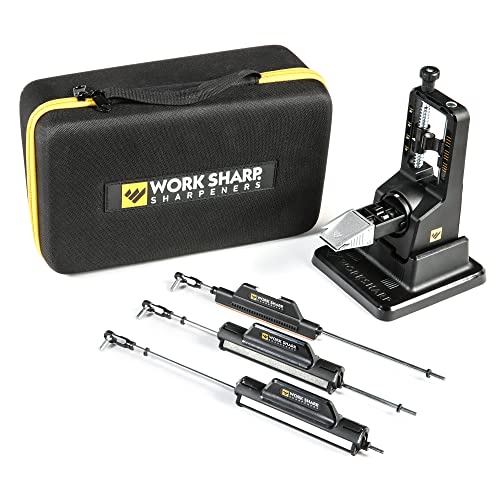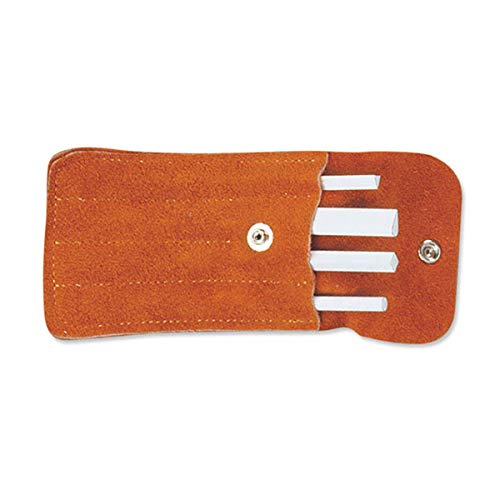
Sharpening a pocket knife with an oil stone is a skill that every outdoors enthusiast should possess. A dull knife not only compromises your safety while using it, but it also hinders your efficiency and precision. Keeping your pocket knife sharp ensures that it will always be ready for any task or emergency.
Using an oil stone to sharpen your pocket knife is a traditional and effective method that has been used for centuries. The process involves manually rubbing the blade against the stone to remove any imperfections and create a sharp edge. This method requires patience and practice, but the results are well worth the effort.
Before you begin, gather the necessary materials including an oil stone, honing oil, a damp cloth, and a firm surface to work on. Make sure your blade is clean and dry before starting the sharpening process. It is also important to take safety precautions by wearing protective gloves and ensuring a stable surface for your work area.
To sharpen your pocket knife with an oil stone, start by applying a few drops of honing oil to the stone’s surface. The oil helps to reduce friction and increase the sharpening process. Hold the knife at a consistent angle, typically between 15 and 20 degrees, and begin sliding the blade across the stone in a controlled motion. Repeat this process on both sides of the blade, ensuring even sharpening.
Continue sharpening until you can feel a burr or raised edge forming along the blade. This indicates that the blade is properly sharpened. Once you’ve achieved a sharp edge, wipe the blade clean with a damp cloth to remove any residue. Test the knife’s sharpness by carefully slicing through a piece of paper or cutting material.
Regularly sharpening your pocket knife with an oil stone will keep it in optimal condition, prolonging its lifespan and ensuring its reliable performance. Remember to clean your oil stone and store it properly after each use to maintain its effectiveness. With practice and patience, you’ll become proficient in sharpening your pocket knife and be prepared for any outdoor adventure!
Understanding the Importance of Sharpening
Sharpening a pocket knife is not just a matter of convenience; it is essential for maintaining its functionality and effectiveness. Whether you use a pocket knife for everyday tasks or for outdoor activities like camping or hiking, keeping it sharp is crucial for performing tasks efficiently and safely.
Over time, the blade of a pocket knife becomes dull due to use, and the edge gets worn down and loses its sharpness. A dull knife can be dangerous as it requires more force to cut through materials, increasing the risk of slipping and injuring yourself. Additionally, a blunt knife can ruin the quality of the cut and can make the task more challenging than it needs to be.
Sharpening a pocket knife not only restores its cutting edge but also prolongs its lifespan. Regularly sharpening the blade helps maintain its shape and prevents it from becoming chipped or damaged. By keeping the blade sharp, you can ensure that your pocket knife remains reliable and efficient for a longer period.
Using an oil stone to sharpen your pocket knife offers several advantages. Oil stones are versatile and can be used for both coarse and fine sharpening, depending on the grit of the stone. They are also easy to use and provide excellent control over the sharpening process.
Proper sharpening technique is essential to achieve the best results. It involves holding the blade at the correct angle against the stone and making consistent strokes along the edge. With some practice and patience, you can master the art of sharpening a pocket knife and maintain its cutting performance.
Investing time and effort into sharpening your pocket knife with an oil stone is worthwhile. It not only improves the knife’s functionality but also enhances your safety and ensures that you are always prepared for any task or outdoor adventure.
Step-by-Step Guide for Using an Oil Stone
Sharpening a pocket knife with an oil stone involves a few simple steps. Following this step-by-step guide will ensure that you achieve a sharp edge on your knife:
Step 1: Prepare the oil stone
- Start by soaking the oil stone in water for about 5 to 10 minutes. This will help prevent the stone from becoming dry during the sharpening process.
- After soaking, place the oil stone on a stable surface, such as a workbench or table, with the coarse side facing up.
Step 2: Determine the angle
Before you start sharpening, you need to determine the angle at which you will hold the knife against the stone. This angle is usually between 15 and 20 degrees. You can use a sharpening guide or simply estimate the angle based on the knife’s bevel.
Step 3: Begin sharpening
- Hold the knife firmly with one hand, making sure your fingers are away from the blade.
- With your other hand, place the knife’s blade against the oil stone at the determined angle.
- Starting from the base of the blade, move the knife across the stone towards the tip, while maintaining a consistent angle and exerting light pressure.
- Repeat this motion for about 10 to 15 passes, or until you feel a slight burr on the opposite side of the blade.
Step 4: Flip and repeat
- Once you have sharpened one side of the blade, flip the knife over and repeat the process on the other side.
- Remember to maintain the same angle and apply light pressure while moving the blade across the stone.
- Continue this process until you achieve the desired sharpness. You can test the sharpness by gently running your thumb across the blade (be careful not to cut yourself).
Step 5: Clean and store the oil stone
After sharpening your pocket knife, it’s important to clean the oil stone to remove any metal particles. Rinse the stone with water and let it air dry completely before storing it in a cool, dry place.
Following this step-by-step guide will help you sharpen your pocket knife effectively using an oil stone. Remember to take your time and be patient, as sharpening requires practice to achieve the best results.
Tips and Techniques for Effective Sharpening
Sharpening a pocket knife with an oil stone is a skill that requires practice and technique. Here are some valuable tips to help you achieve a sharp edge:
1. Choose the right angle
Hold the knife at a consistent angle against the oil stone. A 20-degree angle is typically recommended for pocket knives. Use a sharpening guide or visually estimate the angle to ensure consistent results.
2. Start with coarse grit
If your knife is very dull or has nicks, begin by using a coarse grit oil stone. This will help reshape the blade and remove any imperfections. Apply a few drops of honing oil to the stone and start sharpening with controlled strokes.
3. Maintain consistent pressure
Apply even and steady pressure while sharpening the knife. Avoid using excessive force as it can damage the blade or the stone. Keep an eye on your fingers and always stay focused on the task.
4. Use a lubricant
Applying honing oil or a lubricant to the oil stone reduces friction and helps keep the stone clean. This allows the knife to glide smoothly across the surface and prevents metal shavings from clogging the stone.
5. Alternate sides
Remember to alternate sides after a few strokes to ensure even sharpening. This helps maintain a symmetrical edge and prevents the knife from becoming unbalanced. Keep a consistent motion throughout the process.
6. Test the sharpness
After sharpening, test the sharpness of the knife by carefully running your finger along the edge. Be cautious and avoid applying excess pressure to prevent accidents. A sharp knife should easily cut through paper or shave arm hair with minimal effort.
Remember, practice makes perfect when it comes to sharpening. With time, patience, and these techniques, you’ll be able to achieve a razor-sharp edge on your pocket knife.
Maintenance and Care for a Sharpened Pocket Knife
Once you have successfully sharpened your pocket knife using an oil stone, it’s important to properly maintain and care for it to ensure its longevity and continued sharpness. Here are some tips on how to do that:
Clean Regularly
After each use, make sure to clean your pocket knife thoroughly. Use a mild soap and warm water to gently remove any dirt, debris, or residue from the blade. Dry it thoroughly before storing to prevent rust and corrosion.
Oil the Blade
Regularly oiling the blade of your pocket knife is essential for its maintenance. Apply a few drops of lubricating oil to a soft cloth and rub it onto the entire surface of the blade. This helps prevent rust and keeps the blade moving smoothly.
Tip: Be sure to use a lubricating oil specifically designed for knives, as other oils may cause damage or affect the knife’s performance.
Store Properly
When not in use, it’s important to store your sharpened pocket knife in a safe and appropriate manner. Consider using a sheath or blade cover to protect the blade from accidental damage. Store it in a dry place, away from humidity, where it won’t come into contact with other metal objects that could cause scratches.
Important: Always store your pocket knife in a location that is out of reach and inaccessible by children.
By following these maintenance and care practices, you can ensure that your sharpened pocket knife remains in optimal condition, ready for use whenever you need it.










